Wie die Leistung von Akkupacks durch Kapazitätsschwankungen prismatischer Zellen beeinflusst wird
Leistung und Lebensdauer eines Akkupacks hängen stark von der Konsistenz und Qualität seiner einzelnen Zellen ab. Bei der prismatischen Zelltechnologie können selbst geringe Kapazitätsunterschiede die Effizienz, Sicherheit und Gesamtlebensdauer erheblich beeinträchtigen. Das Verständnis der Auswirkungen dieser Unterschiede auf Akkupacks ist für Ingenieure, Hersteller und Endverbraucher gleichermaßen von entscheidender Bedeutung.
In diesem ausführlichen Leitfaden untersuchen wir die Rolle von Kapazitätsschwankungen prismatischer Zellen bei der Leistung von Akkupacks und behandeln dabei Schlüsselfaktoren wie Energiedichte, Wärmemanagement und Ausgleichsstrategien.
- Wie sich Kapazitätsunterschiede prismatischer Zellen auf die Effizienz von Batteriepacks auswirken
- Die Rolle der prismatischen Zellanpassung für die Batterielebensdauer
- Auswirkungen prismatischer Zellvariationen in der Praxis
- Minderungsstrategien für optimale Leistung prismatischer Zellen
Wie sich Kapazitätsunterschiede prismatischer Zellen auf die Effizienz von Batteriepacks auswirken
Akkupacks bestehen aus mehreren prismatischen Zellen, die in Reihe oder parallel geschaltet sind. Wenn die Kapazitäten dieser Zellen nicht übereinstimmen, treten verschiedene Leistungsprobleme auf:
Reduzierter Energieverbrauch
Zellen mit geringerer Kapazität entladen sich schneller, wodurch der gesamte Akku vorzeitig abgeschaltet wird. Dies führt zu Energieverschwendung bei Zellen mit höherer Kapazität.
Erhöhte Wärmeentwicklung
Nicht übereinstimmende prismatische Zellen erzeugen eine ungleichmäßige Stromverteilung, wodurch einige Zellen überlastet werden und überhitzen, was den Abbau beschleunigt.
Probleme mit Spannungsungleichgewichten
Bei in Reihe geschalteten Zellen mit unterschiedlicher Kapazität kommt es zu Spannungsabweichungen, was zu ineffizientem Laden und potenziellen Sicherheitsrisiken führt.
>>Siehe auch: Wie viele Zyklen hält eine 100-Ah-Batterie? Erkundung der Batterielebensdauer
Die Rolle der prismatischen Zellanpassung für die Batterielebensdauer
Hersteller nutzen die prismatische Zellsortierung, um Kapazitätsunterschiede zu minimieren. Wichtige Strategien sind:
Chargenprüfung und Sortierung
Zellen werden unter kontrollierten Bedingungen getestet und nach ähnlicher Kapazität gruppiert.
Enge Toleranzen (z. B. ± 1 %) verbessern die Packungskonsistenz.
Fortschrittliche Batteriemanagementsysteme (BMS)
Ein intelligentes BMS gleicht die Zellspannungen aktiv aus.
Verhindert das Überladen/Überentladen schwächerer Zellen.
Wärmemanagementlösungen
Aktive Kühlsysteme helfen, eine gleichmäßige Temperatur aufrechtzuerhalten.
Reduziert die Belastung nicht übereinstimmender prismatischer Zellen.
Auswirkungen prismatischer Zellvariationen in der Praxis
Elektrofahrzeuge (EVs)
Ungleichmäßiger Zellverschleiß verringert die Reichweite.
Eine schnellere Abnutzung der Batterie erhöht die Kosten für den Austausch.
Energiespeichersysteme (ESS)
Geringere Effizienz bei Solar-/Windspeicheranwendungen.
Höherer Wartungsbedarf aufgrund von Zellungleichgewichten.
Unterhaltungselektronik
Kürzere Gerätelaufzeit.
Mögliche Schwellungs- oder Überhitzungsrisiken.
>>Siehe auch Calculadora de conversión de amperios-hora a vatios-hora (Ah a Wh)
Minderungsstrategien für optimale Leistung prismatischer Zellen
Verbesserte Herstellungsprozesse
Eine strengere Qualitätskontrolle reduziert die anfängliche Kapazitätsstreuung.
Laserschweißen und Präzisionsmontage sorgen für eine höhere Konsistenz.
Adaptive Ladealgorithmen
Das KI-gesteuerte Laden passt die Raten je nach Zellenzustand an.
Verlängert die Lebensdauer der Packung trotz geringfügiger Abweichungen.
Zukünftige Innovationen in der prismatischen Zelltechnologie
Festkörperprismatische Zellen versprechen eine höhere Gleichmäßigkeit.
Selbstausgleichende Nanomaterialien könnten Fehlanpassungen beseitigen.
Die Auswirkungen von Kapazitätsschwankungen prismatischer Zellen auf die Leistung von Akkupacks sind nicht zu übersehen. Von reduzierter Effizienz bis hin zu Sicherheitsbedenken können selbst kleine Abweichungen zu erheblichen Nachteilen führen. Durch fortschrittliche Fertigung, intelligentes BMS und innovatives Wärmemanagement lassen sich diese Herausforderungen jedoch mindern.
Mit der Weiterentwicklung der prismatischen Zelltechnologie können wir eine noch höhere Konsistenz und Zuverlässigkeit erwarten und so eine optimale Leistung für Elektrofahrzeuge, Energiespeicher und Unterhaltungselektronik gewährleisten. Durch proaktives Angehen von Kapazitätsschwankungen können Hersteller langlebigere, sicherere und effizientere Batteriesysteme entwickeln.

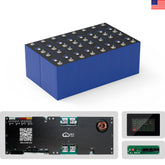

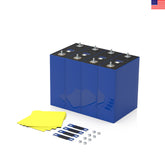
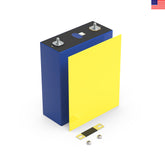
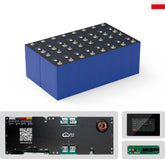

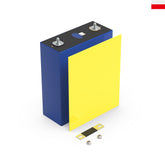

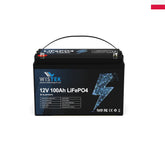
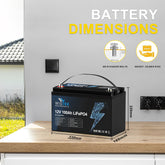



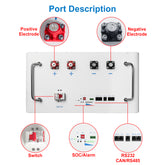

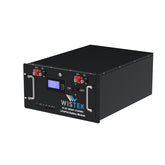


Leave a comment
All blog comments are checked prior to publishing